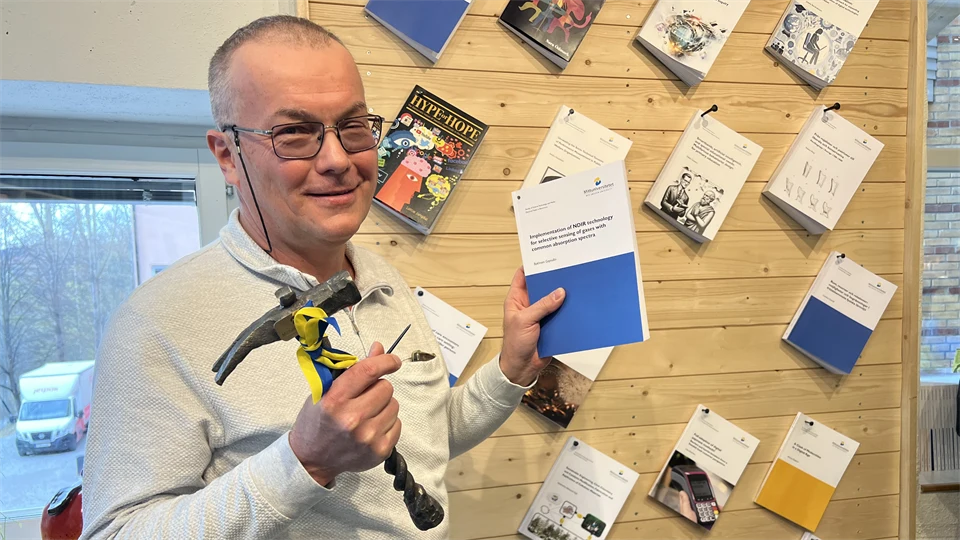Defense of doctoral thesis in electronics with Bakhram Gaynullin
Welcome to a public defense of doctoral thesis in electronics with Bakhram Gaynullin who will present his thesis "Implementation of NDIR technology for selective sensing of gases with common absorption spectra".
Doctoral thesis: Implementation of NDIR technology for selective sensing of gases with common absorption spectra
Date: June 10, 2025, at 10 am.
Room: O102 campus Sundsvall and Zoom.
Supervisor: Associate Professor Claes Mattsson, Mid Sweden University.
Assistant supervisor: Associate Professor Göran Thungström, Mid Sweden University.
Industry Supervisor: Adjunct Professor Henrik Rödjgegård and Dr. Christine Hummelgård, Senseair.
Opponent: Professor Jürgen Wöllenstein, Fraunhofer Institute for Physical Metrology.
Meeting ID: 647 6656 9949
Abstract
(English)
Sensing gas concentrations using optical absorption offers valuable advantages over other methods in a wide variety of real-world applications from industrial processes to environmental monitoring. Among the fastest growing developing detection techniques on the global market is the nondispersive infrared method (NDIR). Sensors developed based on this principle meet the increasing demand for low-cost, reliable and long-term maintenance-free solutions. In recent years, key technological components such as light sources, photodetectors, optical cavities, and electronic elements have seen rapid advancements. These improvements have significantly enhanced accuracy, sensitivity, and resolution, thereby broadening the scope of applications.
Despite these benefits, the NDIR technique has inherent limitations rooted in both fundamental physical principles and sensor design constraints. Among the most important interfering factors to investigate are variations in the sensing environment's temperature and pressure, the presence of water vapour, and the aging of sensor components. Each of these can introduce measurement errors by affecting the sensor's internal components and the physical properties of the surrounding environment. The correct interpretation of error sources is one of the most difficult and important tasks involved in designing stable, high-precision sensors.
A defining characteristic of NDIR sensing is the relationship between light transmittance and the number of absorbing molecules. Any gas molecules within the optical path of the sensor that exhibit infrared absorption will absorb incident radiation. When equipped with an interference filter that selects a specific spectral band, an NDIR sensor can estimate the concentration of a target gas that absorbs within that band. The total absorption within the selected spectral range is then translated into a concentration value.
However, if absorption lines of multiple gas species overlap within the same spectral band, it becomes impossible to selectively determine the concentration of a specific gas. This lack of selectivity is a major limitation of the NDIR method.
Water vapour, in particular, poses a significant challenge, as its absorption lines appear across nearly the entire infrared spectrum relevant to NDIR sensing. This greatly restricts the method's applicability in environmental measurements, where water vapour is almost always present.
The overarching research goal is to develop a solution for selectively estimating the concentration of a target gas in mixtures where other gases have overlapping absorption lines. Within this context, the more specific objective is to accurately determine the true concentration on methane (CH4) under environmental conditions, where it is continuously mixed with water vapour. This serves as a representative but challenging example of gas pairs with overlapping spectra.
To address this, several designs of multichannel NDIR sensors were developed and refined to improve selectivity. In support of this effort, an advance system was also built, incorporating calibration test equipment, supporting software, and a robust selection algorithm.
Key findings from the study include an advanced compensation method for pressure-induced errors and a novel technique for selective concentration measurement of gases with overlapping absorption spectra.
